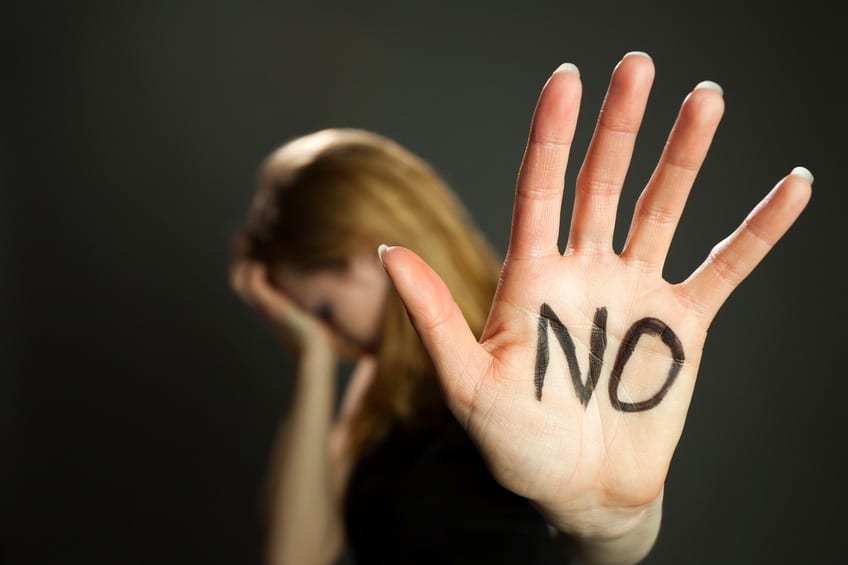90% of young women in the US have experienced sexual harassment
Updated March 27, 2023
Startling findings from a recent report by the prestigious Harvard Graduate School of Education reveal that nearly 90% of young women in the United States have experienced sexual harassment during their lifetime. The comprehensive study, based on a survey involving over 3,000 individuals aged 18 to 25 across the country, sheds light on the pervasive nature of this issue.
What is particularly concerning is that despite the alarmingly high number, many of these young women choose not to confide in their parents or educators about their experiences. This highlights a troubling lack of communication and support systems for addressing and combating sexual harassment among the youth.
In addition to unveiling the prevalence of sexual harassment, the report also delves into the impact on developing healthy romantic relationships. It suggests that teenagers and adults often overestimate the frequency of casual sexual encounters among young people. Consequently, this misconception creates societal pressure on teenagers and young adults to engage in sexual activities, even when they are neither interested nor ready. The study warns that such pressures can harm individuals’ well-being and ability to establish mutually respectful relationships.
These findings underscore the urgent need for comprehensive education, open dialogue, and supportive environments to tackle sexual harassment effectively. By creating safe spaces for conversations and providing accurate information about healthy relationships, society can work towards empowering young women and fostering a culture that rejects harassment and promotes mutual respect. Full Story
Engaging Article Worth Exploring: Next Stock Market Crash Prediction: Hype Or Hope
Sexual harassment among teens is pervasive.
A recently released report titled “Let Her Learn: Stopping School Pushout” sheds light on the distressing reality of sexual violence and harassment many young women face, which often contributes to their decision to drop out of school. The study, conducted in collaboration with Lake Research Partners, aimed to identify the factors leading to girls leaving educational institutions. It involved surveying 1,003 teenage girls aged 14 to 18 from various parts of the United States in January of this year.
The findings are deeply concerning, revealing that sexual violence and harassment are so prevalent that 1 in 6 surveyed teenage girls disclosed experiencing harassment since Election Day. Moreover, the report highlights that 1 in 5 girls aged 14 to 18 (21%) reported being sexually assaulted, which the National Women’s Law Center (NWLC) defines as instances of non-consensual kissing or touching.
It is distressing to note that girls from diverse backgrounds, including girls of colour and LGBTQ girls, face sexual assault and harassment at rates higher than the average. These disparities further underscore the urgent need to address the systemic issues contributing to such injustices.
The report serves as a crucial call to action, emphasizing the imperative to create safe and inclusive educational environments that protect girls from sexual violence and harassment. By implementing comprehensive measures, fostering awareness, and providing support systems, society can work towards ensuring that all girls have the opportunity to thrive in their educational pursuits. Full story
80% of teenage girls suffer serious mental illness after sexual assault
In a study conducted by academics from University College London (UCL) and specialists from King’s College Hospital NHS Trust, 137 girls between the ages of 13 and 17 (with an average age of 15.6) who had experienced assault between April 2013 and April 2015 were examined. The research took place at three sexual assault referral centres in London, where the victims received treatment.
The study’s results, published in The Lancet Child and Adolescent Health medical journal, revealed the profound impact of the assaults on girls’ mental health. Four to five months after the attacks, 80% of the girls exhibited at least one mental health disorder, with over half (55%) experiencing two or more diseases.
The findings also highlighted the disproportionate likelihood of girls who had been assaulted coming from disadvantaged or troubled backgrounds. Three-quarters of them came from economically disadvantaged families, one in five had a statement of special educational needs, and over half had previous involvement with social services.
This study underscores the urgent need for comprehensive support systems and mental health services to address the long-term consequences of adolescent sexual assault. By providing targeted assistance and resources to these vulnerable girls, we can strive to mitigate the significant impact on their mental well-being and improve their overall recovery. Full Story
Women endure a lifetime of sexual harassment even before they enter the workplace.
Following the Harvey Weinstein scandal, Alyssa Milano, a Hollywood actor, urged women who had experienced sexual assault or harassment to share their stories by posting “me too” as a status. The purpose was to shed light on the widespread nature of the issue. Regardless of their backgrounds, many women bravely shared powerful accounts of the abuse they had endured, including instances before entering the workforce or even reaching puberty.
As a teenager, I vividly remember devising strategies to protect myself from potential rapists. It was disheartening to realize the risks of being a woman at such a young age. The harassment I faced as a teenager instilled in me a fear of societal blame, often overshadowing the actions of the sexual aggressors themselves.
Personal Experience Revelations
My personal experience with harassment began when I was a teenager working part-time in sales. My male boss suggested that wearing revealing clothing would help increase sales, implying that he would also enjoy it. This kind of objectifying comment and pressure to dress a certain way persisted throughout my teenage years.
Unfortunately, my story extends far beyond my teenage years. For over a decade before entering the workforce, I faced various sexual harassment from teenage boys and adult men. The first incident occurred when I was only 11 years old and involved a male teacher. He asked me to stay behind after class under the pretence of discussing schoolwork.
However, once alone, he took advantage of his position of power and pressed his body against mine, trapping me in an uncomfortable embrace. Although I lacked the vocabulary to articulate what had happened, I knew I had been subjected to inappropriate touching by someone in authority. Initially, I kept silent, but the harassment persisted, and eventually, I confided in my mother, who promptly reported it to a senior teacher at the school. Unfortunately, the response she received from this male teacher was dismissive, suggesting that I had misunderstood the intentions of an adult.
Like many others, I can relate to the “me too” movement. Even before entering the workforce, I faced a decade of sexual harassment from teenage boys and adult men. My experiences began at a young age and involved individuals in positions of power. The incident with my male teacher exemplified the inappropriate conduct that can occur when trust is abused. Full Story
MeToo: Shedding Light on the Widespread Reality of Sexual Harassment
The #MeToo movement has emerged as one of the largest online trends, with over 1.7 million tweets originating from at least 85 countries. However, it is important to recognize that sexual harassment primarily affects girls daily, not just in luxurious hotel suites.
Formerly, Title IX provided significant protection against sexual harassment and assault in schools. Yet, Secretary of Education Betsy DeVos quietly revoked this crucial safeguard, resulting in a lack of public outcry.
Silent Suffering: Unveiling the Shadows of Sexual Harassment
Sexual harassment, encompassing unwelcome advances, requests for sexual favours, and other unwanted forms of verbal, nonverbal, or physical conduct, begins for girls as early as late elementary school. By the sixth grade, over one-third of girls had experienced sexual harassment from their male peers, and by middle school, almost all students (95%) had witnessed such incidents in their schools.
Research conducted by Professor Campbell Leaper and myself reveals that by the end of high school, 90% of girls have encountered sexual harassment at least once. Disturbingly, 62% have been subjected to derogatory or demeaning names, 51% have experienced unwanted physical contact, and 28% have endured teasing, threats, or bullying by boys. For girls attending college, the risk of sexual assault escalates, with 1 in 4 becoming victims while on campus, often at the hands of acquaintances. Full Story
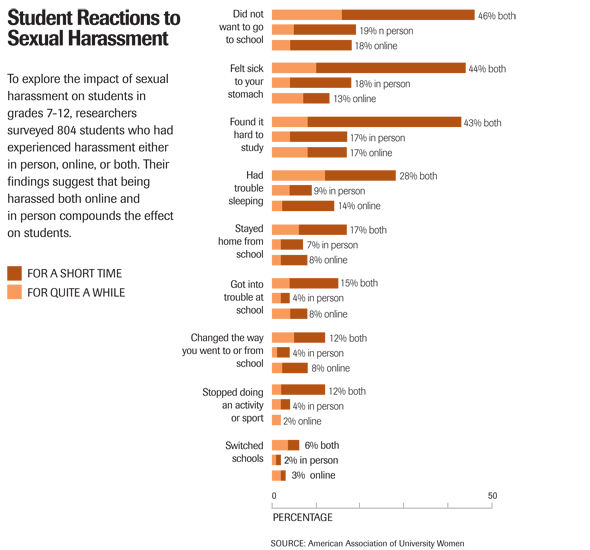
Limited Data and Rare Instances: Exploring Women as Sexual Harassers
Reliable figures concerning women as sexual harassers are scarce; the available data often date back over a decade.
Los Angeles-based attorney Genie Harrison, who specializes in workplace sexual harassment cases, attests that instances of women as harassers are extremely rare. While acknowledging that men can be victims and women can be abusers, she estimates the ratio to be, at best, 99.9% victims to 0.1% women as harassers.
The most recent data from the Equal Employment Opportunity Commission (EEOC) reveals that in 2016, out of 6,758 complaints of sexual harassment received, a little over 16% were filed by men. However, the data do not specify the gender of the harasser.
It’s important to note that the EEOC’s data does not comprehensively represent the entire country, and the agency estimates that more than 80% of harassment incidents, regardless of gender, go unreported.
The Defense Department tracks sexual harassment complaints in the armed services and National Guard. The latest available report from 2016 shows 601 complaints, with 415 alleged offenders reported for 326 substantiated complaints. Most harassers were male (95%), with only 19 identified as female (5%). Full Story
Sexual Harassment: A Pervasive Reality Impacting Women’s Lives Globally”
According to Rachel Jewkes, director of the global program “What Works to Prevent Violence Against Women and Girls,” rape represents an extreme outcome of sexual harassment. However, Jewkes asserts that many behaviours exist within this spectrum.
Jewkes firmly believes that sexual harassment is deeply intertwined with daily life, especially in public spaces, serving as a means to restrict women’s freedom. Regardless of location, whether it be the streets of London, Mumbai, Washington, or Lagos, the recent surge of stories shared under the #MeToo movement demonstrates the universal nature of this problem, transcending borders and cultures.
In 2017, it became undeniably evident that sexual harassment permeates every corner of the world, leading to a collective realization: it is a pervasive issue demanding attention.
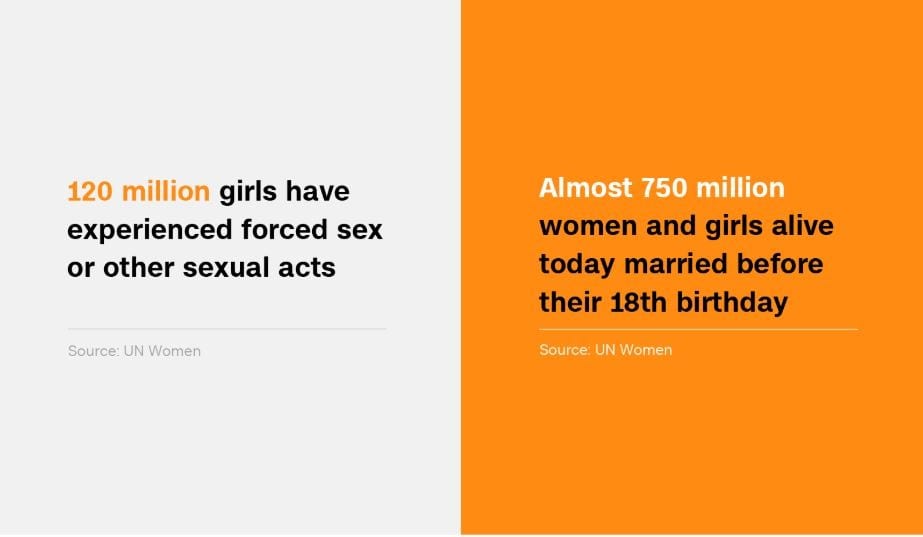
Sexual Harassment in Asia
Dr. Jewkes, who conducted research on male violence in Asia and the Pacific and is currently based in South Africa, highlights the existence of significant male sexual entitlement, particularly in South Asia. She points out that public spaces are predominantly controlled by men, who perceive a sense of ownership over these areas.,”
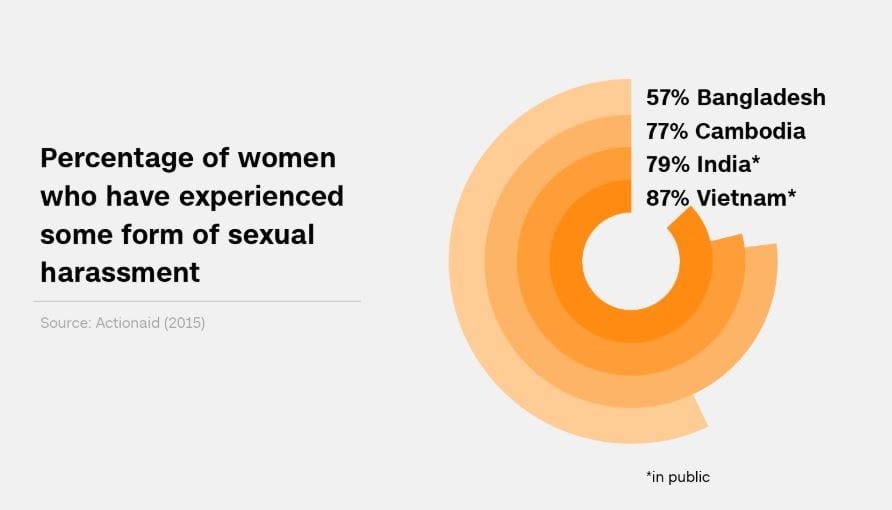
Silenced Voices: The Complex Factors and Ongoing Patriarchy Fueling Sexual Harassment
According to Lina Abirafeh, director of the Institute for Women’s Studies in the Arab World, located in Lebanon, there are numerous reasons behind the prevailing silence surrounding sexual harassment. She emphasizes that despite hearing occasional accounts, people are afraid to speak up.
Abirafeh highlights that patriarchal structures remain deeply entrenched, contributing to this culture of silence. There is a sense of entitlement and a belief that sexual harassment is acceptable due to long-standing norms and traditions.
Among those particularly vulnerable are migrant and domestic workers, who find themselves voiceless and marginalized. Abirafeh points out that their chances of obtaining justice after reporting violence are extremely slim.
.
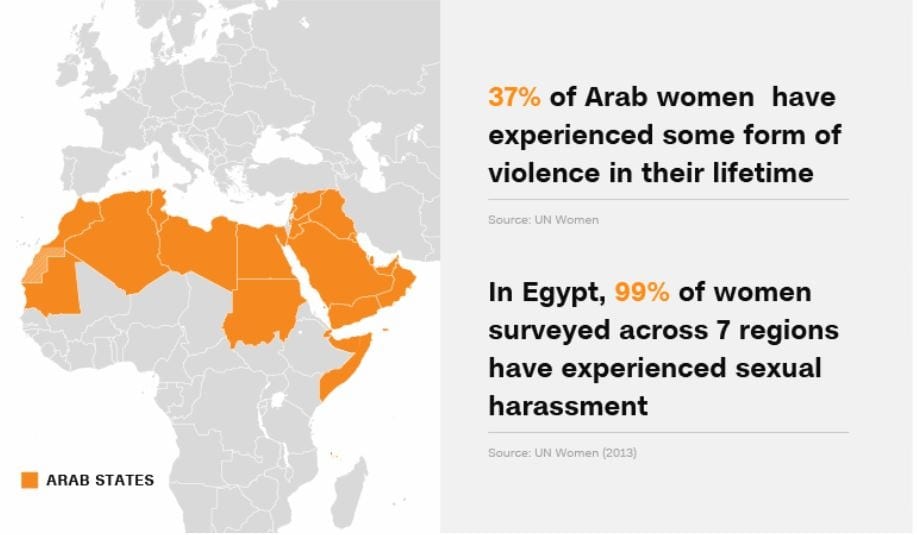
Nigeria: Child Marriage Rates Exceed 43%, while 6 in 10 Children Face Violence
According to UN Women, child marriage rates in Nigeria surpass 43%, highlighting a distressing reality. Additionally, the National Population Commission in Nigeria reports that six out of every 10 children under the age of 18 have encountered various forms of physical, emotional, and sexual violence.
South Africa: Alarming Rates of Abuse and Fear
In South Africa, a mere 12% of women feel safe from verbal or physical abuse within their own neighbourhoods. Startlingly, an ActionAid report. from 2015 reveals that 80% of surveyed women had experienced some form of abuse in the past year. These statistics shed light on the urgent need for intervention and support.
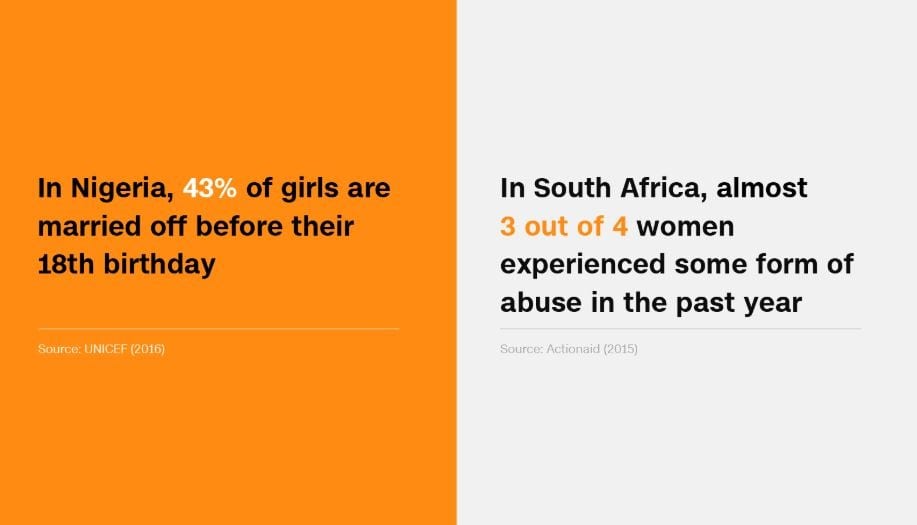
Unveiling Violence Against Women in Southern Africa: Alarming Realities and Cultural Contrasts
According to Jewkes, although sexual harassment is prevalent, it does not impose the same restrictions on women’s mobility as it does in Asia. Unlike in honour-based cultures where family members closely guard female chastity, this is not the case.
In southern Africa, violence against women is alarmingly high. Jewkes highlights that the risk of rape is significantly greater in this region compared to others. Tragically, a large number of women become victims of rape.
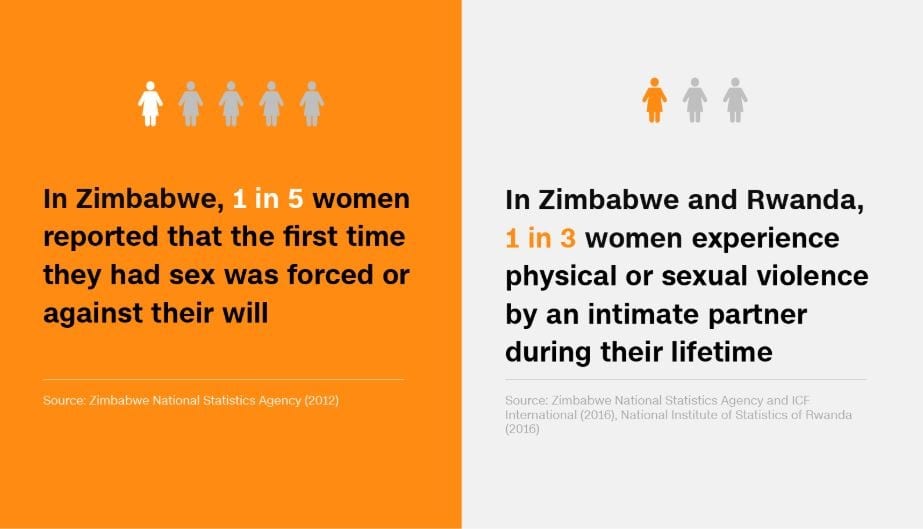
According to Brennocks, girls in Zimbabwe are vulnerable to sexual assault, child marriage, and prostitution, primarily due to extreme poverty. These girls find themselves in a helpless position and cannot defend themselves.
When a girl reports sexual abuse, she takes a considerable risk. If she lives with relatives, she may be expelled from her home. In cases where the abuser is the family’s primary breadwinner and is incarcerated, the family loses their financial support, jeopardizing their survival. Consequently, the child often experiences physical abuse and severe mistreatment. Additionally, if the girl becomes pregnant, she is frequently coerced into having an abortion, often under dire circumstances. Full story
FAQs
Q: What did the recent report by the Harvard Graduate School of Education reveal about sexual harassment among young women in the United States?
A: The report revealed that nearly 90% of young women in the United States have experienced sexual harassment during their lifetime.
Q: What impact does sexual harassment have on developing healthy romantic relationships, according to the Harvard Graduate School of Education report?
A: The report suggests that societal pressure created by misconceptions about casual sexual encounters can harm individuals’ well-being and ability to establish mutually respectful relationships.
Q: What are the implications of the findings on sexual harassment among teens, as highlighted in the “Let Her Learn: Stopping School Pushout” report?
A: The report shows that sexual violence and harassment are prevalent among teenage girls, leading to their decision to drop out of school. This highlights the urgent need to create safe and inclusive educational environments to protect girls from such incidents.
Q: What were the findings of the study on mental health disorders among girls who experienced assault, as published in The Lancet Child and Adolescent Health journal?
A: The study found that 80% of the girls examined had at least one mental health disorder, with over half experiencing two or more disorders, highlighting the significant impact of the assault on their mental well-being.
Q: What is the significance of the limited data on women as sexual harassers?
A: Available data suggest that instances of women as sexual harassers are extremely rare, with estimates ranging from 99.9% victims to 0.1% women as harassers. However, the data may not comprehensively represent the entire country, and most harassment incidents go unreported regardless of gender.
Q: How does sexual harassment affect women’s lives globally, according to Rachel Jewkes of the “What Works to Prevent Violence Against Women and Girls” program?
A: Sexual harassment is deeply intertwined with daily life in both public and private spaces, restricting women’s freedom globally. The #MeToo movement has highlighted the universal nature of this problem, transcending borders and cultures.
Q: Why is there a prevailing silence surrounding sexual harassment, according to Lina Abirafeh of the Institute for Women’s Studies in the Arab World?
A: Patriarchal structures and long-standing norms contribute to the culture of silence surrounding sexual harassment. Fear of speaking up and lack of justice, particularly for marginalized individuals like migrants and domestic workers, further contribute to this silence.
Q: What are the alarming realities of sexual harassment in Nigeria and South Africa?
A: In Nigeria, child marriage rates exceed 43%, and six out of every 10 children under 18 face various forms of physical, emotional, and sexual violence. In South Africa, only 12% of women feel safe from verbal or physical abuse in their own neighbourhoods, and 80% of surveyed women have experienced some form of abuse in the past year.
Q: What risks and vulnerabilities are faced by girls in Zimbabwe, according to Brennocks?
A: Girls in Zimbabwe face significant vulnerability to sexual assault, child marriage, and prostitution due to extreme poverty. Reporting sexual abuse often comes with risks such as expulsion from home or loss of financial support.
Other Stories of Interest

Watching Porn Affects Marriage & Wealth

How to Build Wealth in Your 40s ?

Best Stock Trading Apps: Android and iPhone Edition

Sleep Gender Disparity: Do Women Require More Rest

Navigating the Future: Robot and Human Interaction in the Age of AI

AI trends: The Future is all About AI?

College Debt: Graduates’ Luxury Habits Amidst Struggle

U.S. Government Lies: Unveiling 22.9% Real Unemployment

Exploring AI Future Trends: What Lies Ahead

What Is Financial Freedom: Winning the Investing Game

Donald Trump’s Agenda For 2020 and Beyond

Unveiling the Health Elixir: Drinking Olive Oil Benefits

Carnosine Benefits: An Antioxidant for Health, Longevity, and Disease Prevention
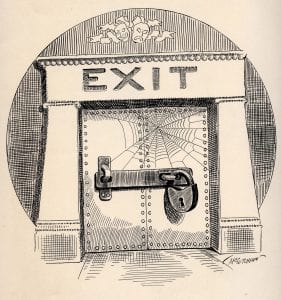
Iran War: Unraveling Pandora’s Box



